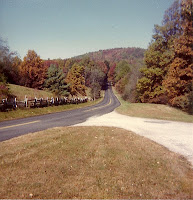The Importance of Setting the Scene in Your Writing, Part 1
Setting, the place or places where your story occurs, is as important as character development. My writing group hones in on this quickly when someone fails to show us the setting. This happens more than you realize because writers often start a scene with two people interacting but fail to establish where they are.
If the character is outdoors, some of the basic things the reader needs to know quickly are:
If the characters are indoors, the reader wants to know where they are. They could be in:
Within the first few sentences of your scene we should get a feel for where we are. Depending on the location, we might need to know a bit more. For example:
Setting prevents them being pulled out of the story.
Next week, I'll share a few examples of setting the scene and how to achieve it without being obvious.
Meanwhile, I would love the hear what you're reading and how the author sets the scene.
What is Setting?
Setting describes the room or place where the story occurs. One question it must answer is whether the characters are indoors or outdoors.If the character is outdoors, some of the basic things the reader needs to know quickly are:
- Day or night
- Climate
- Landscape
If the characters are indoors, the reader wants to know where they are. They could be in:
- A house - which room?
- A store - what kind?
- A church - what faith?
- An office or manufacturing floor?
- Etc.
Within the first few sentences of your scene we should get a feel for where we are. Depending on the location, we might need to know a bit more. For example:
- Is there any furniture? What kind? Fancy? Old? Beat up?
- What colors dominate the room?
- Is it comfy or sterile?
Why is this important?
Readers picture your character somewhere when the scene begins. If you don't provide a few clues, they will unconsciously visualize a place. Then, when your character sits down in a chair, they might be confused because there were no chairs in the room they imagined or they assumed your character was already seated. You don't want your reader to stop reading and say, "Wait. Where are we?"Setting prevents them being pulled out of the story.
Next week, I'll share a few examples of setting the scene and how to achieve it without being obvious.
Meanwhile, I would love the hear what you're reading and how the author sets the scene.



Comments